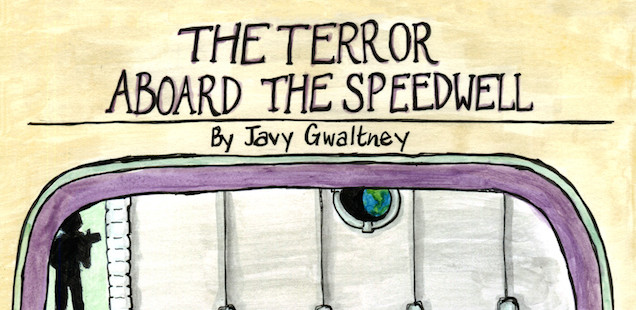
Set $Games to Destroy: Vol. 3
Soha Kareem shares another four games made in Twine.
The Day After Chemo
I remember June 21st, 2007 like it was yesterday. I was waiting at the bus station on the first day of summer when my mom called me, sounding like she had just finished crying. She told me that my sister, who was 24 at the time, was diagnosed with stage 3A breast cancer. I thought it was a joke. A double mastectomy and a year of aggressive treatments later, I still thought it was a joke. Even when I saw her last night over drinks, with her hair longer than it’s ever been, I realized how unprepared I was to see my best friend growing up get horrifyingly ill and then survive with a big smile on her face. A happy ending, absofuckinglutely, but it took the worst journey to get there.
Jessifer’s The Day After Chemo transported me back to that sunny Thursday, but with a different narrative. They take us through 4 cycles of chemotherapy, with some cycles that make us feel tired, but generally okay, and other cycles that leave us sobbing. This game details the often impossible task of trying to stabilize life through the chaos of a cancer diagnosis, something that I’m sure I took for granted when doing my best to support my sister. After playing through this several times, I wanted to both hug Jessifer for creating and surviving through this, and call my sister to just hear her booming voice as she talks about her day, absorbing just how fast 7 years can change everything.
Lights Out, Please
Lights Out, Please has been curated by fellow Haywire editor Kaitlin Tremblay. She was not involved in this article in any way.
I’ve always hated funhouses. It’s not a clown phobia or anything, I mostly just get a lot of anxiety in tight crevices of endless mirrors and hate the feeling that someone’s sole job is to try to make me shit myself. Lights Out, Please left me with some of that anxiety, albeit with more eloquence. It’s a collaborative project between 13 writers sharing unique short horror stories. It resembles a haunted funhouse with 13 rooms curated to force the reader to check behind their back every few calculated seconds and jump at non-diegetic sounds. It agitates me in the same way that spending hours on /r/NoSleep and Creepypasta do, when I blame myself for getting too curious (and always before going to bed).
Lights Out, Please is a glimpse into the ways we try and scare each other, using stylized text that often mimics how we would retell a story. A pause for suspense, an emphasis for shock, and grotesque details to crawl up our spine move together and are woven into an unpleasant package of horror. Read at your own risk, and do take note of the content warnings in the introduction.
Impostor Syndrome
I had a good month last month. A few days after completing my Master’s degree I signed a full time contract with a company I really like. It was the perfect message to send to my parents: “look at these accomplishments I’m checking off my list!” But even after overwhelming congratulations and praise, I still felt like an absolute failure at heart. I convinced myself that once others read my thesis, they’ll realize my writing and arguments are convoluted and naive. My coworkers are bound to discover that I’m utterly useless and sometimes irritatingly forgetful. These reactions of mine are referred to as “impostor syndrome,” a little voice in my head refusing to acknowledge the amount of work I’ve done because it’s just never good enough and I don’t belong in my industry. Personally, I blame academia or the patriarchy for instilling these insecurities in many people, but then I always blame the patriarchy.
Deirdra Kiai’s Impostor Syndrome is essentially a nasty confrontation between ourselves and the syndrome that convinces us we’re worthless nothings. It’s a story about speaking at a conference, but also about the way the character speaks to herself. I winced and cringed through this story, both due to Kiai’s blunt approach to storytelling and how much I saw myself, and my pesky inner voice, in Georgiana.
The Terror Aboard the Speedwell
The Terror Aboard the Speedwell was written by fellow Haywire editor Javy Gwaltney. He was not involved in this article in any way.
Fuck, give me more science fiction. Always, in any way, even if it’s bad – I eat that genre up. For me, the most frustrating aspect of consuming sci-fi over the years has been not being able to find something that resonates beyond instant gratification. I think the last time I was truly impressed with this genre was after finishing the first Dead Space. Until now, when The Terror Aboard the Speedwell showed up and fulfilled my longing for another great sci-fi game, which just so happens to be made with Twine.
Where do you begin to describe a 50k word game that has 60 possible endings, and is still expanding with DLC? Javy Gwaltney has created an epic story filled with dread, tension, and detail so intricate it’s impossible to fathom in just one playthrough. What’s mostly addictive about this game is the dialogue between characters, written with such careful realism that still flirts with mood-setting one-liners. Before playing, I was expecting walls of text and getting lost in long paragraphs, but the way the characters converse almost made this experience too short, yet still very replayable, which is a rare occurrence in Twine games. The Terror Aboard the Speedwell is a game that not only has a terrific story, but is a shining example of how a tool like Twine can flourish when the choices you make alter the journey.
Soha Kareem is a Toronto-based games critic and experimental designer. Check out her portfolio, and see what she’s angry about on Twitter.


